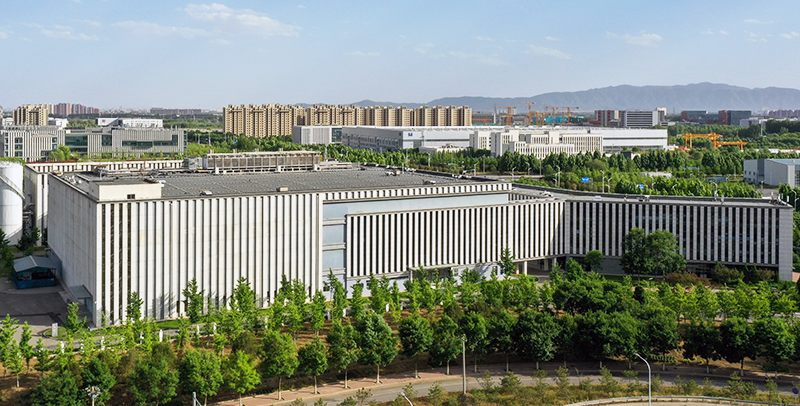Find out about The Open University's Environment courses
Cloud technologies continue to be an accelerating factor in digital transformation and innovation, but as the ‘cloud’ is out of sight, the term can portray cloud computing as a lighter-than-air panacea for both computing and the environment – this, though, it is not.
Cloud technologies still rely on the same fundamental resources as all computing systems, but just at an incredible scale. This scale multiplies the cloud’s impact, both good and bad. Our job at an organisational IT level is to know how to recognise and minimise the negative, while promoting and accelerating the good.
This article looks at just some of the ways cloud contributes to our digital carbon footprints from processing workloads to the storage and transmission of data to, from and between applications.
Before we do that, it’s worth noting that the shift of computing and storage to the cloud has provided an opportunity to extend personal computing asset lifetime, as discussed in the responsible procurement article.

Cloud helps extend personal computer lifetime use
Around 2016 there was a tipping point in cloud technologies, and their growth curve sped up rapidly.
Before this, personal computing devices such as laptops and desktop computers needed their processors, memory and hard-disks to be updated at regular intervals in order to keep up with the demands of new software.
Fuelled by a parallel growth of cheap, near-ubiquitous connectivity, cloud adoption soared, sifting processing power and storage capabilities from laptops and desktops to the network, or cloud.
This shift ushered in a new computing paradigm for organisations of all sizes. This also changed the role of personal computers, moving them more towards input and display devices, becoming less prone to the evolving software demands – thereby, extending their usable lifetimes.
How much carbon in the cloud?
We can begin to understand the carbon impact of data centres by analysing their energy use. Cloud technologies live in data centres, and data centres are estimated to account for 1% to 1.5% of global energy consumption. The data transmission networks that connect them to each other and everything else, a further 1%. A data centre in China.
A data centre in China.
An IEEE article suggests that cloud technologies account for almost all of the 1% to 1.5% range and that this is expected to grow to 8% by 2030.
While the link between the internet’s energy consumption and emissions is becoming less tightly coupled, as data centres and communication providers embark on system-wide, rapid decarbonisation strategies, there are still two reasons to dig into the cloud emissions.
First of all, the Intergovernmental Panel on Climate Change (IPCC) are not confident that these renewable energy projects will sufficiently outpace the growth in demand.
Second, the operational energy use of digital technologies accounts for just 20% of the total life-time carbon footprint of the technology assets
The manufacture, distribution and end-of-life disposal of IT equipment can add up to be much greater than the lifetime energy usage, typically four times greater.
That means that if 20% of a data centre’s operational energy accounts for 1% of the global energy use, the embodied and upfront carbon of the technology they use could be up to four times greater: 4% today and 32% by 2030.
Therefore, we must be mindful about the emissions generated by our use of cloud, and not treat it as ‘fire and forget’ or ‘out of sight, out of mind.’
Where does all the cloud carbon come from?
To answer this, we can simplify the problem into three areas, the energy and technology required for:
- Data processing and generation
- Data transmission (to, from and via the cloud)
- Data storage
Data processing and generation
When we think about the energy required do computing, it is probably easiest to imagine how hot our computers get when we use them. Data centres – and the networks needed to connect it all together – are the same. As they do work to process and create data, they consume energy, of which a great deal is turned into heat.
To avoid damage, this heat must be removed through cooling which itself is another major consumer of energy in the cloud. In some of the very best hyperscale data centres, the amount of energy used to cool is one tenth of that used to power the computing equipment. In most, though, this number rises to 60% of the energy used to compute is used to cool.
With this in mind, our use of cloud technologies to process, manage and create new data has an energy overhead that is greater than the amount of energy required to do the work, therefore, any energy we are wasting by doing needless work is also creating demand for needless cooling.
What is needless work?
Cloud technologies are often very easy to set up and activate, and when they’re running they keep running in the background without much in the way of a reminder. That means we can often simply not realise they are running, especially if we’re not using them – this is needless work.
Examples of this could be cloud HR or collaboration applications during extended company holiday periods, applications used to run end of quarter reports, remote desktop applications for prior-employees or those on vacation, project management software instances for projects that have been delivered, or automated data capture and backup solutions that are no longer required.
The individual savings for each of these may be small, but they are incrementally cumulative. Plus, since most cloud applications and technology platforms are billed on a usage basis, there are both financial and carbon savings to be reaped.
Other types of needless work include redundant email attachments, unnecessary video calls and bloated website pages – which leads us nicely on to the carbon cost of data transmission…
Data transmission
In many developed economies, the cost of connectivity has plummeted over the last 15 years, to the point where it almost feels free.
When connectivity was more expensive, businesses, developers and users would make more conscious decisions about what data needed to be transmitted, yet today we are metaphorically surrounded by ‘data lakes’ – huge virtual warehouses of data that have been collected with the hope that one day some value could be derived from them.
While connectivity may now be considered to have a reasonably low financial cost, the carbon cost is still significant.
From an energy point of view, the cost of data transmission is still a significant chunk of a device’s power requirement, especially for small items like mobile phones and Internet of Things (IOT) devices. On a larger scale, as we saw above, communications infrastructure is estimated to account for 1% of the entire global energy demand.
Essentially every byte has its own carbon footprint, from its creation, use, transmission, storage, and destruction. Simply put, the more bytes we create, the bigger the total footprint. The problem is that it is very easy to create large amounts of data very quickly.
Whether we use email to communicate and collaborate or other tools such as Slack, WhatsApp or other cloud messaging technologies, we’ve become accustomed to the idea of over communicating.
While each message might be individually small, the scale of these across businesses soon adds up, and as above, it is the unnecessary data that we should look to obliterate.
We should look at the overhead required to spam-scan, parse and deliver emails, especially junk mail, unread newsletters, and those with pointless graphics or duplicated attachments, and the exponential traffic spikes generated from accidental reply-alls to large groups.
Websites are another source of cloud carbon emissions, especially those that are bloated with unoptimized low-value images or video clips.

However, the biggest single source of data transmission in our societies today is video. Video is the fastest growing single data category across nearly all networks, whether it is streaming video such as Netflix, video doorbells, or video conference calls.
Video conference calls can generate a staggering amount of carbon for each and every participant’s video stream during every single minute of use. This is a problem that grew very rapidly during the pandemic, as so many of us found the utility, value and ease of use of video calls triggered us to drop old fashioned audio-only calls.
Now, as we move back to a new hybrid normality, the use of video calls persists, and so does its carbon impact.
Jisc’s Exploring Digital Carbon Footprints report goes into significantly more detail on this point, but a high-level take-away is that a two-person video call potentially generates between 25 times and almost 100 times more data per minute than the same call on audio only. Naturally, this number multiplies by the number of participants on the call.
As an example, a 100-person company making just two one-hour Teams video calls a week could create more than nine tonnes of CO2e emissions over the course of a year. Compared to just over one-third of a tonne from audio-only Teams calls of the same duration.
Of course, video-enabled calls can add a great deal of value over audio only, and are often a much better alternative to physical travel, but neither of these statements are true all the time.
A couple of quick tips to reduce the carbon footprint of digital meetings are: First, switch from HD video streams, to SD (saving approximately half of the bandwidth and CO2e). Second, turn off the video when it no longer adds value to the call, even if just for a few minutes can have a big effect.
Although the most prolific, video calls are not the only source of video digital carbon.
Internet-delivered TV, such as on-demand services like Netflix, live streaming news outlets and valueless webcam streams all add into the equation.
Data storage
Stanford University estimates that every 100 gigabytes of data stored in the cloud could generate 200 kg of carbon emissions per year.
100GB sounds like a lot, but in today’s world it really isn’t. A single Windows laptop backup can be 200GB, and mobile backups can easily eclipse 10’s gigabytes each. Not to mention, the reams of presentations, documents and email backups that are kept and retained with only the infrequently enacted destruction steps of out-of-date data retention policies to keep it in check.
Gerry McGovern, author of World Wide Waste, cites reports that claim 90% of stored data is never accessed once stored, and that 90% of IoT data is never used.
Eliminating the storage of data that will never be used cuts the storage carbon, but also the carbon associated with the communication and processing of that data.
Clearing out unrequired or stale data frees up space for other applications, requiring less new hardware (and energy used to run it), thereby reducing the amount of both embodied and operational carbon.
Summary
Digital technologies deliver so much value and are so pervasive that we can’t imagine a future without them. However, there are changes we can make to our habits and behaviours that can help reduce our digital carbon footprints, without sacrificing the benefits that digital brings.
To do this, we must become more aware of and reduce our digital waste. This applies across both physical products and the services we consume that are built on top of them, especially cloud technologies.
Cloud has become ubiquitous across many industries, yet it’s the ease of use that can lead to unconscious use, wasted energy and unnecessary carbon emissions.
Raising awareness of the environmental impact of wasted cloud utilisation, whether that’s applications, storage, or data transfer, can help reduce both the cumulative carbon emissions of cloud technologies and their financial cost.
More on digital carbon footprints
This resource is part of the Supporting hybrid working and digital transformation collection, made possible by the Higher Educational Funding Council for Wales.








Rate and Review
Rate this article
Review this article
Log into OpenLearn to leave reviews and join in the conversation.
Article reviews